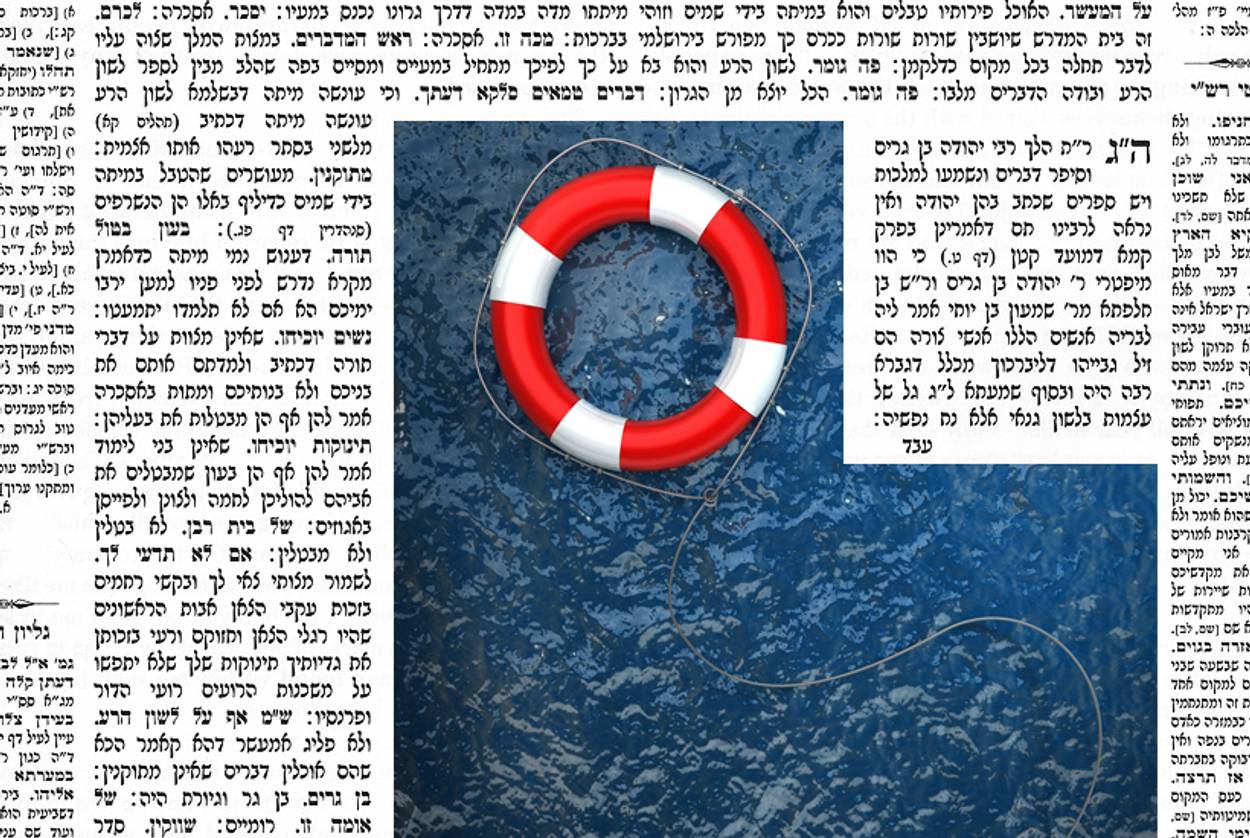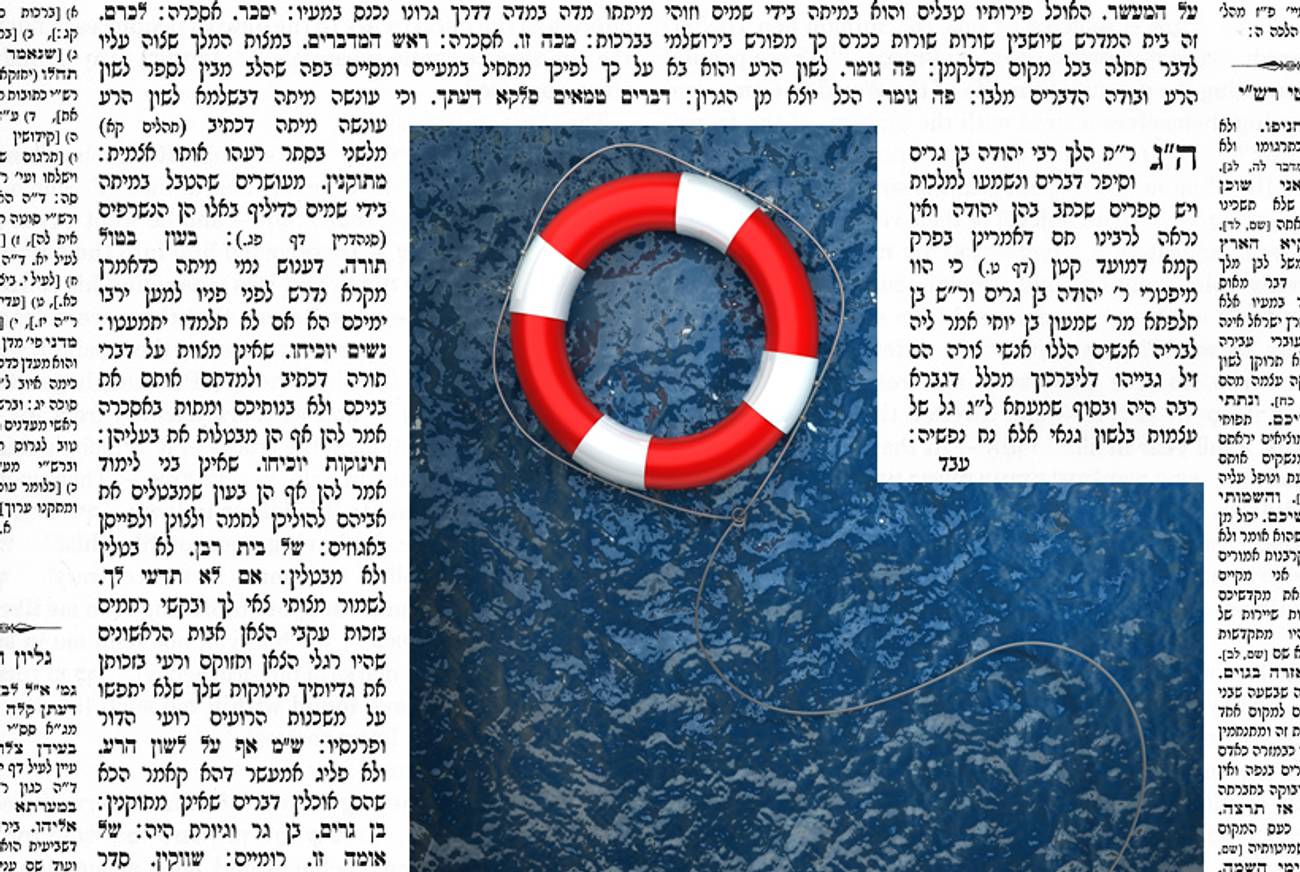In the Talmud, One Sin Is Beyond Repentance: Giving God and Jews a Bad Name
A holy desecration is unethical in part because of the social pressure to reflect well on the tribe




Literary critic Adam Kirsch is reading a page of Talmud a day, along with Jews around the world.
The conclusion of Tractate Yoma this week brought Daf Yomi readers face to face with the heart of Yom Kippur: repentance. For months now, we have learned about the color of the high priest’s robes and how to sacrifice a goat to Azazel. Most of these matters concern the ordinary Jew not at all, and the overall picture of Yom Kippur that one gets from the Talmud feels very far from the holiday as we experience it today. But now, at the culmination of the whole tractate, the rabbis zero in on the spiritual and ethical questions that concern us most. How exactly does Yom Kippur achieve atonement for our sins? What steps must we take to show that repentance is sincere?
Before getting to these matters of the soul, the Talmud takes up a series of questions relating to the body. Even here, however, there is an ethical principle at stake, one that concerns the fundamental priorities of Judaism. Fasting is required of healthy adults on Yom Kippur, but as the rabbis explain, it is not imposed on children, pregnant women, or the sick. Just as we already learned about Shabbat, the ordinary restrictions give way before the cardinal rule of Judaism: Life is sacred and must be preserved at almost all costs.
With a pregnant woman, for example, the rabbis are so concerned about her well-being, and even just her peace of mind, that they allow her to violate Jewish dietary laws. Familiar with the idea that pregnancy brings cravings, the rabbis ask what to do if a woman suddenly develops a craving for pork. Because this is considered a health matter rather than just an idle whim, she is allowed to satisfy it—first, by tasting a bit of pork juice through a straw; then, if she’s still craving it, by eating the meat itself. “There is no halakha that stands in the way of saving a life,” the Talmud rules, “except for the prohibitions against idol worship, and forbidden sexual relationships, and bloodshed.”
But when it comes to these three categories, the rabbis were extremely strict: It would be better to die rather than violate them. According to one story, told in Yoma 82b, a man once came to Rava and said, “The master of the village where I live said to me: Kill so-and-so, and if you do not do so, I will kill you.” The Torah makes clear that it is permitted to kill an attacker in self-defense, but this is a different case: Are you allowed to kill an innocent third party in order to save your own life? It sounds very much like one of the thought experiments that philosophers today like to make up—for instance, the famous “trolley problem.” Rava gives an answer that would have satisfied Kant: If it is forbidden to kill, then it is forbidden to kill, regardless of what might happen to you. “What did you see to make you think that your blood is redder than his?” Rava asks in a vivid image. The innocent man’s blood is just as valuable as the threatened man’s.
The rabbis go on to offer a short course in Talmudic medicine, listing several diseases and the measures that should be taken to cure them. Bulmos is a mysterious disease that brings blindness and sudden, extreme hunger (the word is Greek, derived from the same root as bulimia), and it can be cured by feeding the patient “honey and all types of sweet foods.” Shmuel advises a diet of honey and sheep’s tail; Rabbi Yochanan recalls a time when he suffered from bulmos and he ran to eat figs from a tree. Rabbi Yehuda went even further, tearing the bread out of a shepherd’s hand in order to satisfy his sudden appetite.
Other conditions demand other dietary measures. There is some debate over what to do for a person who is bitten by a mad dog: Some rabbis advise eating liver, while others say this is useless. A more extreme treatment, mentioned in Yoma 84a, is to take off all your clothes and run naked, as Rav Huna did once when he was rubbed by a mad dog. If all else fails, however, the Talmud offers a magic prescription: The patient should take the skin of a male hyena and write on it the incantation “Kanti kanti kelirus,” then bury his clothes in a cemetery for 12 months. During that year, he may not drink water from a cup, only from a copper tube, lest he see the reflection of a demon in the water. For the rabbis, as for all the wise men of their age, there was no very clear distinction between natural and supernatural causes of illness. What we think of as rabies was for them a kind of demonic possession.
The rabbis go on to discuss other times when Shabbat or Yom Kippur can be violated to save a life. In general, a Jew should err on the side of vigilance: If you see a life in danger, you should immediately do what’s needed to save it, without waiting for official rabbinic permission. For instance, if a child is drowning in the sea, you should cast a net to save him, even if in the process you end up catching some fish, which is forbidden on Shabbat. Even a child who gets stuck behind a locked door, but is not in imminent danger, should be freed on Shabbat, since there’s a possibility that he will end up getting hurt.
All of these precautions, however, apply only to Jewish lives. When it comes to saving gentile lives, the rabbis are far less lenient, as we can see in the troubling discussion in Yoma 84b. Say a building collapses on Shabbat and someone is trapped in the rubble. Now imagine that, before the building fell, there had been 10 people inside. If even just one of those people was a Jew and nine were gentiles, the rabbis say that it is permitted to violate Shabbat and dig for the survivor in the rubble. But if all 10 were gentiles, the implication is that one should not violate Shabbat to save them.
Naturally, this distinction now strikes us as abhorrent. Indeed, one might say that to refuse to violate Shabbat to save a non-Jewish life would constitute what in Yoma 86a is described as the worst sin of all: chillul Hashem, the desecration of God’s name. “What are the circumstances that cause desecration of God’s name?” the Gemara asks and gives a few examples. If Rav, a great and famous sage, takes meat from a butcher but does not pay for it right away, it is a chillul Hashem, because it might give people the impression that a pious Jew is acting unethically. If Rabbi Yochanan, another sage, walks four cubits without wearing tefillin, that is also a chillul Hashem. Even if he were legally excused from wearing tefillin because of bodily weakness, he would be giving the impression that he treats God’s laws lightly.
Desecrating the Name, in other words, is anything that gives Jews and Judaism a bad reputation. “One who reads Torah, and learns Mishna, and serves Torah scholars, but his business practices are not done faithfully, and he does not speak pleasantly with other people, what do people say about him? Woe to so-and-so who studied Torah, woe to his father who taught him Torah … see how destructive are his deeds, and how ugly are his ways,” the Gemara says. Today, we might want to extend the rule: All Jews who bring their people into disrepute—such as Bernie Madoff, to take a conspicuous recent example of bad “business practices”—are guilty of desecrating the Name.
The rabbis take chillul Hashem so seriously that they place it in a category of its own when it comes to repentance. For minor sins, the Talmud explains, “repentance atones”: If you are genuinely sorry, God will forgive you. For more serious sins, “repentance suspends punishment and Yom Kippur atones”: Being penitent will make God hold off punishing you until Yom Kippur, which washes away the sins of the Jewish people. For still worse sins, which would ordinarily bring the death penalty, Yom Kippur itself merely suspends punishment, and only suffering atones. With Desecration of the Name, however, even suffering doesn’t make up for it: For such a sinner, only “death absolves him.” You have to pay with your life for this worst of all sins.
In the last pages of Yoma, the rabbis are at pains to show that there is nothing automatic about the atonement of Yom Kippur. The Mishna makes clear that a Jew can’t sin freely during the year because he expects Yom Kippur to purge his guilt: “With regard to one who says, I will sin and Yom Kippur will atone, Yom Kippur does not atone.” Rather, a sinner must prove his repentance by ceasing to sin and above all by making it up to those he has injured: “for transgressions between one person and another, Yom Kippur does not atone until he appeases the other person.”
Even the greatest rabbis were subject to this rule, as we learn in Yoma 87a. Once Rabbi Yirmeya insulted Rabbi Abba, so he “went and sat at the threshold” of Abba’s house, seeking to apologize. While he was sitting there, Rabbi Abba’s maid accidentally poured out the sewage onto Yirmeya’s head. When Abba heard about this, he went and sought Yirmeya’s forgiveness. Each rabbi was eager not to be put in the wrong by refusing to apologize.
Indeed, it could be dangerous not to apologize to a great scholar, as we learn in another story involving Rav and a butcher. The butcher had insulted Rav, and the rabbi went to his shop to make up with him. But when the butcher saw Rav, he said merely, “Go, I have nothing to say to you”—whereupon one of the bones from the carcass he was cutting flew up and struck him in the throat, killing him. Just as great scholars are held to a high standard of behavior, so they are entitled to a high degree of consideration from others—and Heaven makes sure that they get it.
***
Like this article? Sign up for our Daily Digest to get Tablet Magazine’s new content in your inbox each morning.
Adam Kirsch is a poet and literary critic, whose books include The People and the Books: 18 Classics of Jewish Literature.
Adam Kirsch is a poet and literary critic, whose books include The People and the Books: 18 Classics of Jewish Literature.